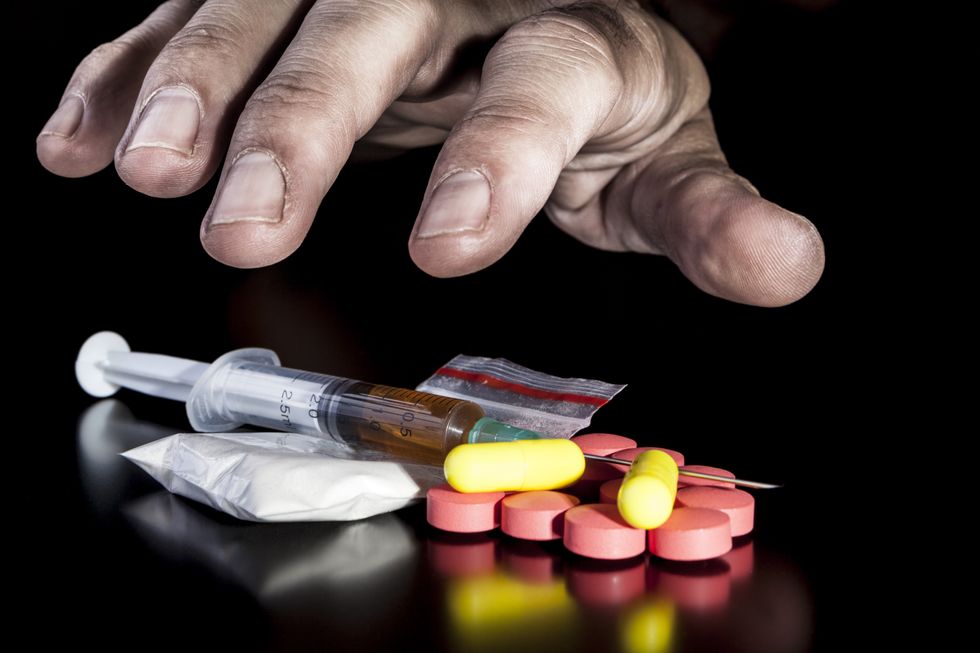Too many beautiful young lives have been cut short due to the horrific drug abuse sweeping our nation. Teachers, parents, teenagers not yet old enough to drive- no one is immune to the deadly grip drugs have on young and old alike. It seems that every single person knows someone they’ve lost to drugs- it’s a devastating pattern that continues to worsen as the opioid epidemic hits home in every part of the country.
Among the worse are Colorado drug problems. The Centennial State has some of the highest rates of drug abuse in the United States. A recent survey from WalletHub analyzed data from every state and found that Colorado came in third in overall drug abuse.
While this is a difficult behavior to track because some people won’t admit to using drugs and not all users engaging in illegal behavior get caught, WalletHub looked at a range of statistics in order to gauge use of both prescription and illegal drugs. This data included the number of meth lab incidents, opioid prescriptions, number of drug arrests per capita, number of substance abuse treatment facilities and percentage of teenagers who admitted to using illicit drugs in the past month, among more.
Although marijuana is now legal in Colorado and only counts for underage use and criminal offenses, Colorado still came in third, behind Vermont in second and Washington D.C. with the highest drug abuse in the country. Rounding out the top 10 are Delaware, Rhode Island, Oregon, Connecticut, Arizona, Massachusetts, and Michigan.
Colorado also has the highest percentage of both teenage and adult drug users- a problem lawmakers, advocates and heartbroken families are trying desperately to solve. It’s practically a race against time- to save these drug users and get them on a path toward a better life before these deadly substances claim their lives.
According to data from Colorado Department of Public Health, overdose deaths from just one kind of opioid painkiller outnumbered all homicides in the state in 2015. That year, 259 people died from overdoses of drugs like hydrocodone and oxycodone- classified as natural prescription opioids.
The state is struggling to combat the highest rate of overdose deaths in the nation. That figure keeps rising, including in rural areas where drugs can run rampant and spread quickly through friends in close-knit communities. For example, Arapahoe County has seen overdose deaths double in the past fifteen years, as prescription painkillers such as OxyContin and Percocet fuel the epidemic.
While drugs were once a forbidden activity isolated to a very small percentage of people, everything from marijuana to meth has infiltrated schools, clubs, workplaces and more. Drugs are so easily accessible nowadays, with a seemingly endless supply of substances readily available for those who want it.
More Americans are using and abusing, as studies show that treatment admission has so much as tripled between 2012 and 2014. Oxycodone, Hydrocodone, Hydromorphone, Methadone and Fentanyl are just some of the substances that have forced people to seek help or die from their drug use.
Another challenge for Colorado officials and law enforcement?
Federal government data shows that this is the only state that has severe problems with the four major intoxicants- Marijuana, Alcohol, Cocaine and Opioids (both prescription painkillers and Heroin). An increasing number of people are combining drugs with Alcohol and consuming illegal, if not deadly, amounts of illegal substances. It’s a recipe for disaster- one that unfortunately too many families know firsthand as they’ve had to bury their loved ones far too early after they lost their battle with drugs.
Illicit drug use in Colorado is higher than the national rate, and annually, more than 20 percent of state residents will make, sell or use illegal substances. That means over half a million people will turn to drugs at some point. Some people binge on Alcohol and drugs on wild nights out, while others are dependent on these substances to get them through the day. They are always chasing that next high, putting themselves and their loved ones in harm’s way as they head straight for a destructive downfall.
The three million people in Denver are in danger of falling victims to drugs, as this is one of the cities hardest hit by addiction. Usage of Marijuana, Cocaine, Alcohol and prescription opioids are higher in Denver than anywhere else in the country.
Despite these high numbers of drug use, a mere 2 percent of users check into drug rehabilitation or treatment centers, meaning many will use drugs until it’s too late. Officials are trying their best to keep up with the epidemic as grieving parents and widows take to social media and storytelling platforms to share their message and try and prevent others’ irreversible pain.
Meth is wreaking havoc everywhere, with no community left untouched by the highly addictive substance. But the northeast and south-central regions of Colorado seem especially susceptible, with a growing number of adults using meth, seemingly unconcerned about the effects their drug use can have on their careers, families and future.
When people become addicted to drugs, they put their substance of choice first, before anything else. They are more focused on their next hit then the people who love them. It’s a harsh and hard reality for families and friends who have to watch someone close to them self-destruct.
In Colorado alone, overdose deaths are more common than car accident deaths. A person dies from a drug overdose every 10 hours, and this has been the leading cause of death in the state since 2005.
It’s a problem that we will continue to combat looking ahead to the future. 2016 marked the second year in a row that life expectancy in the U.S. decreased, largely due to rising drug overdose deaths in younger Americans, according to the CDC. More than 63,600 people in the U.S. died from drug overdose last year alone, an increase from about 52,400 in 2015.





 mr and mrs potato head
StableDiffusion
mr and mrs potato head
StableDiffusion










